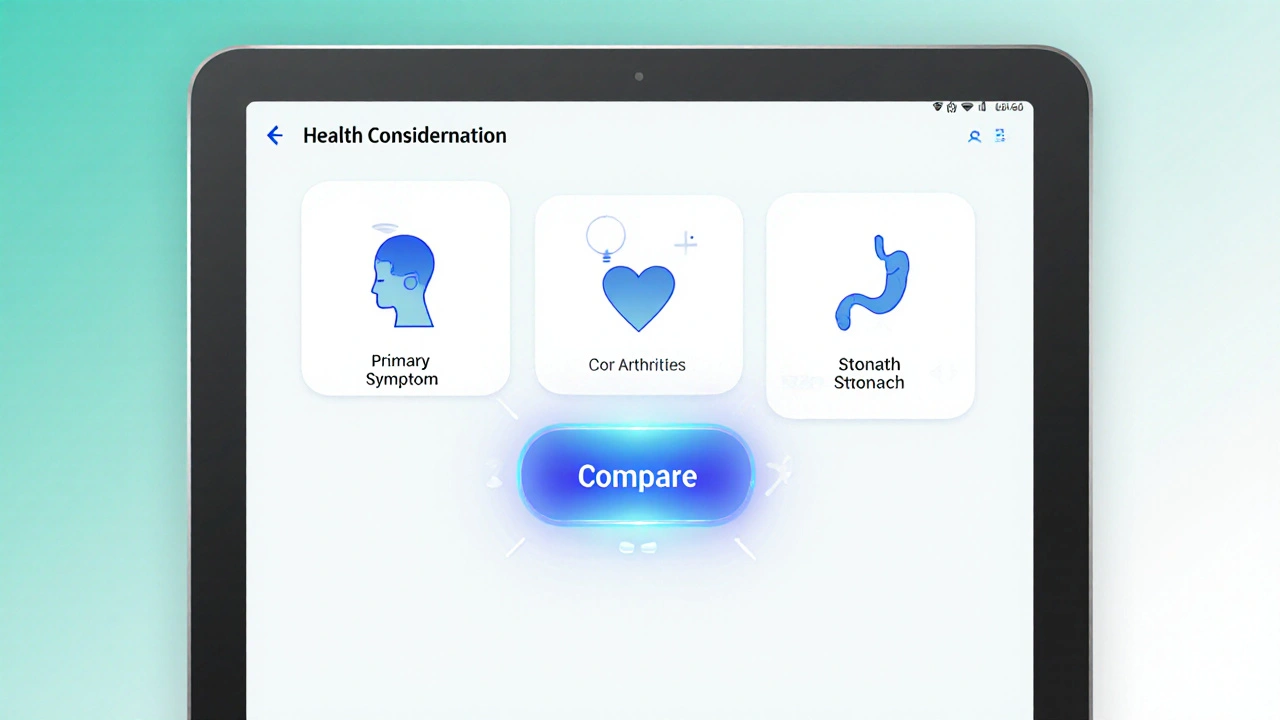When working with pain reliever comparison, a systematic look at over‑the‑counter pain medicines, their effectiveness, safety, and best use cases. Also known as analgesic comparison, it helps you sort through options without getting lost in jargon. The process pain reliever comparison encompasses examining active ingredients like Ibuprofen, an NSAID that reduces inflammation and pain, Acetaminophen, a non‑NSAID pain reliever that works mainly in the brain, Naproxen, a longer‑acting NSAID useful for chronic aches, and Aspirin, a blood‑thinner that also eases mild pain. Each drug brings a unique mix of onset speed, duration, and side‑effect profile. For instance, ibuprofen usually starts working within 30 minutes and lasts 4‑6 hours, making it a go‑to for sudden headaches or menstrual cramps. Acetaminophen, on the other hand, peaks a bit later but is gentler on the stomach, which matters if you have ulcer concerns. Naproxen’s slower kick‑in is balanced by a 12‑hour window, perfect for overnight joint pain. Understanding how dosage, pharmacology, and personal health conditions intersect lets you pick the right product for a headache, joint pain, or post‑exercise soreness without trial‑and‑error.
First, the mechanism of action matters: NSAIDs like ibuprofen, naproxen, and aspirin block COX enzymes to reduce inflammation, while acetaminophen targets the central nervous system to lower perceived pain. Second, safety thresholds differ dramatically—high‑dose ibuprofen can irritate the stomach lining and affect kidney function, whereas acetaminophen poses a liver toxicity risk if you cross the 4 g daily limit. Third, the timing of relief is crucial; naproxen often takes 1‑2 hours to kick in but provides up to 12 hours of coverage, making it ideal for chronic conditions like arthritis. Fourth, individual health considerations such as pregnancy, heart disease, or existing liver issues dictate which analgesic is appropriate. For example, pregnant women are generally advised to avoid NSAIDs after the third trimester but may use acetaminophen under medical guidance. Lastly, drug interactions can change the game: aspirin can thin the blood and interact with anticoagulants, while ibuprofen may lessen the effectiveness of certain blood‑pressure meds. A thorough pain reliever comparison must weigh these variables against the specific pain type—sharp, throbbing, inflammatory, or dull—to recommend the most suitable option.
By keeping these attributes in mind, you’ll be able to navigate the crowded OTC aisle with confidence. Below you’ll find a curated set of articles that dive deeper into each medication, compare pricing, discuss real‑world effectiveness, and offer buying tips for safe online purchases. Whether you’re chasing a quick headache fix, looking for a long‑lasting solution for arthritis, or needing a stomach‑friendly option for everyday aches, the collection gives you practical insights to make an informed choice and avoid costly mistakes. Explore the guides to see how each drug stacks up, learn the best dosing strategies, and discover which product aligns with your health profile.

Compare Motrin (ibuprofen) with top alternatives, see pros, cons, safety tips and get help picking the right pain reliever for you.
read more